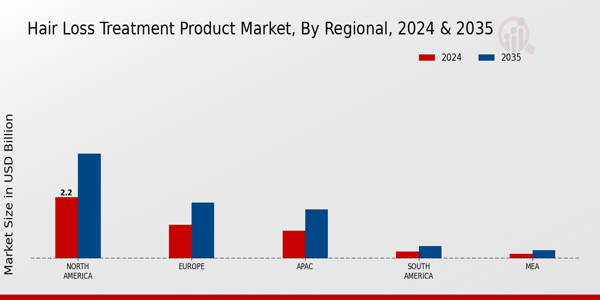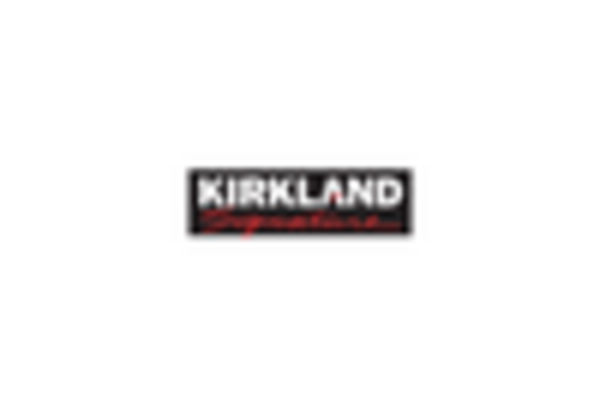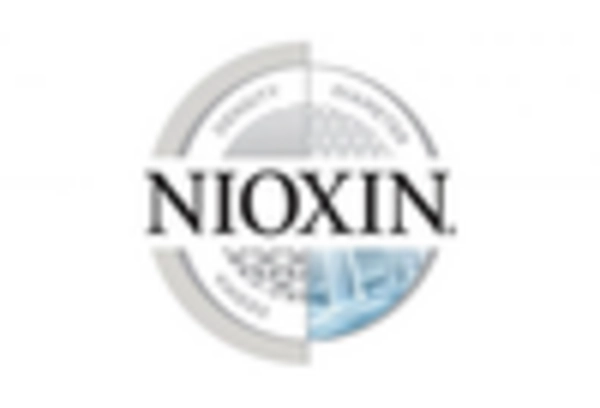Growing Awareness of Hair Loss Issues
The increasing awareness surrounding hair loss issues is a pivotal driver for the Hair Loss Treatment Product Market. As individuals become more informed about the causes and implications of hair loss, the demand for effective treatment solutions rises. Surveys indicate that a significant percentage of the population experiences hair thinning or loss, prompting a search for remedies. This heightened awareness is not limited to older demographics; younger individuals are also seeking solutions, thereby expanding the market base. The Hair Loss Treatment Product Market is witnessing a surge in product development aimed at addressing diverse hair loss concerns, including genetic predispositions and lifestyle factors. Consequently, companies are investing in marketing strategies that educate consumers about available treatments, further propelling market growth.
Increasing Investment in Personal Care
The increasing investment in personal care is a notable driver for the Hair Loss Treatment Product Market. As consumers prioritize self-care and grooming, spending on personal care products, including hair loss treatments, has escalated. Market data reveals that the personal care sector is projected to grow, with hair care products being a significant segment. This trend is particularly pronounced among millennials and Generation Z, who are more inclined to invest in products that enhance their appearance. The Hair Loss Treatment Product Market is benefiting from this shift, as brands are launching premium products that cater to the evolving preferences of consumers. Furthermore, the emphasis on holistic wellness is encouraging individuals to seek comprehensive solutions for hair health, thereby driving market demand.
Rise in E-commerce and Online Retailing
The rise in e-commerce and online retailing is transforming the Hair Loss Treatment Product Market. With the proliferation of digital platforms, consumers now have easier access to a wide range of hair loss treatments from the comfort of their homes. This shift in purchasing behavior is particularly evident among younger consumers who prefer online shopping. Market analysis indicates that online sales of hair loss products have surged, driven by targeted marketing and the convenience of home delivery. Additionally, e-commerce platforms often provide customer reviews and ratings, which can influence purchasing decisions. As a result, traditional retail channels are adapting to this trend by enhancing their online presence, thereby contributing to the overall growth of the Hair Loss Treatment Product Market.
Advancements in Research and Development
Advancements in research and development are significantly influencing the Hair Loss Treatment Product Market. Innovative formulations and technologies are emerging, driven by scientific discoveries related to hair biology and loss mechanisms. For instance, the introduction of stem cell therapy and platelet-rich plasma treatments has opened new avenues for effective hair restoration. Market data suggests that the R&D expenditure in this sector has increased, with companies focusing on clinical trials to validate the efficacy of their products. This commitment to innovation not only enhances product offerings but also builds consumer trust in the Hair Loss Treatment Product Market. As new treatments gain regulatory approval, they are likely to attract a broader audience, thereby expanding market opportunities.
Influence of Social Media and Celebrity Endorsements
The influence of social media and celebrity endorsements is reshaping the Hair Loss Treatment Product Market. Social media platforms serve as powerful tools for brand promotion and consumer engagement, allowing companies to reach a wider audience. Influencers and celebrities often share their personal experiences with hair loss treatments, which can significantly impact consumer perceptions and purchasing behavior. Market trends indicate that products endorsed by well-known figures tend to experience higher sales, as consumers are more likely to trust recommendations from familiar personalities. This phenomenon is particularly relevant in the Hair Loss Treatment Product Market, where authenticity and relatability play crucial roles in consumer decision-making. As brands increasingly collaborate with influencers, the visibility and appeal of hair loss treatments are likely to grow, further stimulating market expansion.


















Leave a Comment